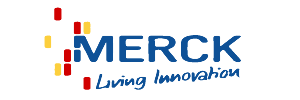Why we want to improve it?
According to the experimental record of Freiburg, the success rate is higher than 95%(32/33). However, this result, to some degree, lacks statistical significance.
In the result section, they emphasize that there is a light band at 1200bp, which they believe could indicate that the Golden Gate connection works well. However, after conducting several experiments by ourselves, we find that the key point to indicate whether Golden Gate connection works is not the band at 1200bp. If the band is not clear and specific in the gel, it indicates the experiment doesn’t go well. We can easily find several light bands under the band of 1200bp. Moreover, the second light band is somewhat lighter than the band at 1200bp. Although the Freiburg can explain the results with the repeatability of the TALE sequence, we suppose that the possibility of the mismatch of the sticky ends still can’t be excluded. Frankly speaking, we try to believe that they really made it, but if the success cannot be repeated, there must be something wrong with their system. You can view Detail information in iGEM2012 Freiburg wiki.

- Freiburg's protocol
- Restriction enzyme digestion of plasmid and TAL repeats and gel extraction respectively. By the mole ratio, plasmid to TALE is 1 to 5 and TALE to TALE is 1 to 1. Ligation with T4 ligase in 22 ℃over night.
- The same ratio of plasmid and TALE repeat, but add the TALE repeats one by one and ligation in 22 ℃, 30 minutes
- Every two parts connect at one time, and try to make three intermediates of 400bp, and then mix the plasmid to make the complete TALE.
- The same ratio and ligation with the program of 22℃ 2min, 40℃ 30,25 repeats.
Unfortunately, all of our attempts failed. We didn’t manage to make a complete TALE, or even make two of them together. However, what is important for us is that when we try the 5th protocol, we notice an unexpected result. When we analyze the sequence result, we find that our left adaptor, 1st part and right adaptor connect together. Why do we get this result? We notice that their sticky end is TGAC, GCTC, and ACTC. That is to say, GCTC and ACTC connect with each other by mistake. In another word, if the sticky ends are very similar, they probably connect with each other. Although we failed again, the result gives us confidence to debug 2012 Freiburg's parts.
How do we connect certain monomer?
- Given a sample sequence with repeating amino acids:

What XX means is that it determine the certain kind of base. For one unit of repetition, other amino acids can be identical.
- A fully functional TALE protein contains one sequence, that does not have repetitive units, recognizing base T, and similar sequence but is only half length as its end. That is, one complete TALE protein is able to recognize certain number of repetitive units and two bases.
- The length that can be recognized is not strictly twelve or fourteen. According to the published results, the length and certain sequence are dependent on number and type of monomer.
We can gather 96 bioparts based on Freiburg, and each part has its counterproductive base on certain location(1,2,3,4,5 or 6). By picking two bases on certain location, we are able to design one TALE protein sequence.
The main principles of connection is built upon the idea of Golden Gate Connection.( Sanjana, N. E. et al. A transcription activator-like effector toolbox for genome engineering. Nature Protocols 7, 171–192 (2012).)
The gust of these procedures is more related to one type of restriction enzyme, type II Restriction Enzyme, especially BsmBI enzyme.

The main feature of this enzyme is the recognition sequence is on only one side of cleavage site. It provides the way which can be used to get certain incision without damaging the whole sequence. The sticky end has 4bp base, and it could be designed even for combination of multiple sticky end. That feature is fancy at first, but we cannot regardless its latent shortcomings.
Let’s analyze the example (AA1) provided by Freiburg.

The underlined parts are recognized by BsmBI. Vertical bar(|) is the cutting position. As for this sample, TGAC is one sticky end which can combine with other seven sticky ends.
2012 Freiburg's parts have seven sticky ends:
We all know that certain two parts can combine together, under base-pair rule. However, whether it is possible that unpaired sticky ends can bind together? In fact, the more similar they are, the more possibility that can form new but error base pairs. Spired by BLAST algorithm, we calculate the similarity of each other sticky ends.

The higher score, the higher similarity, and the higher possibility of mismatch. The table shows that more than 30% of pairs’ score is equal to 3, which means that the possibility of mismatch cannot be neglected. Even if we employ the relatively loose rule to calculate the similarity, we can still find that error rates cannot be neglected.

Why did Freiburg insist to use these sticky ends, even the mis-pairing rates are so high? Why not other sticky ends?
Failed to contact the original designers of these sticky ends, what we can do is just to find feasible advantages of these combinations.
Review the TALE repeated amino acids sequence:
The first amino acid is Leu, which is essential for all connection process. There are six different types of base arrangement for Leu, one of the most number of base arrangement.
The counterproductive sticky ends:
The useless of Degeneracy has helped to design seven sticky ends. However, since the codons for identical amino acid are highly similar. This feature, for experimental scientists, is a double-edged sword.
How to improve the Golden Gate sticky ends? A big Table!
Three basic key questions need to be answered:
- Whether it’s possible to find perfect match pair?
- Whether we can find a certain number of sticky ends with least possibility to be mismatched?
- How to make this sticky-end score table?
Loose rule: Match: 1; Mismatch:-1; Gap: 0
Strict rule: Match: 1; Mismatch:0; Gap: -1
The sticky end is composed of four bases, which means that we can design 256 types of sticky ends at most. The forming pair is represented as a 256*256 table.
To solve the TALE parts problem, we need find seven sticky ends, and the similarity score(hereafter referred to as Score) of each pair of them are less than or equal to 1.

When we select Strict Algorithm to find these ends, it is impossible to find seven sticky ends, that each pair of them has score no more than 1. So we have to select Loose Algorithm.
What we are caring about is whether two amino acids can be located on my target sequence, rather than the 4bp bases. So we should convert the sticky ends information to 2 amino acids.

Based on the above table, we are able to calculate the total scores of each combination and find the least one.
 "
"







